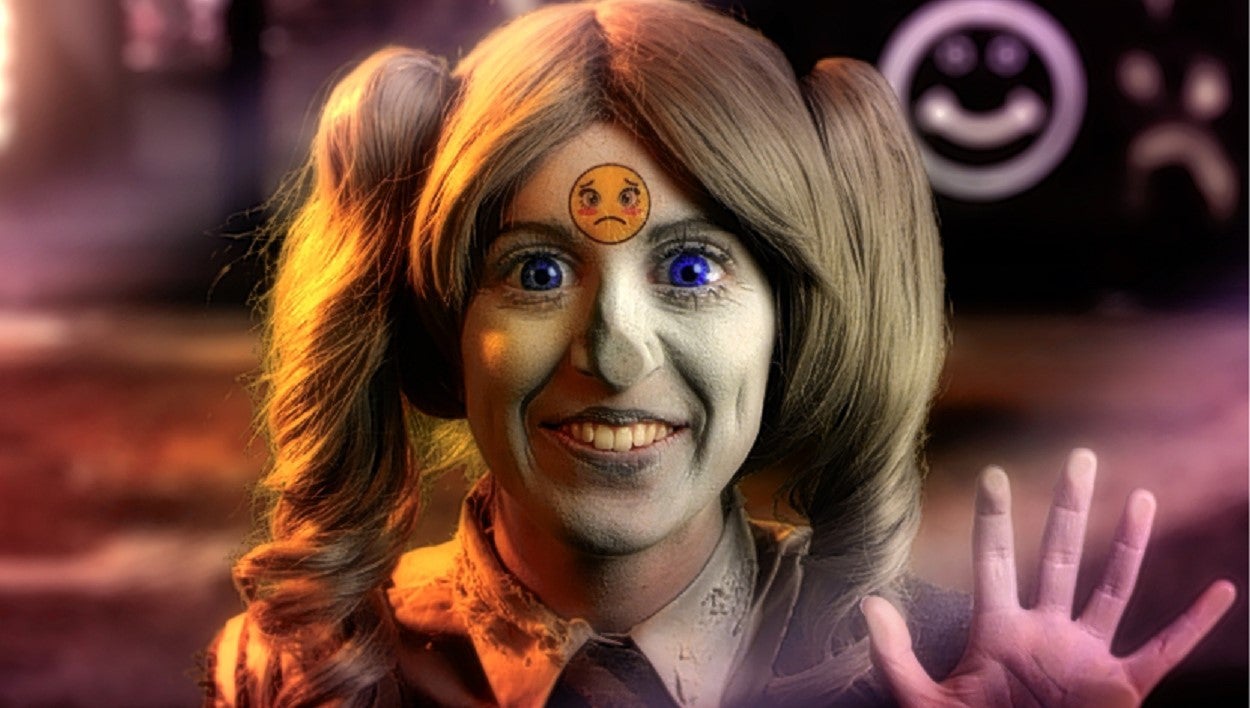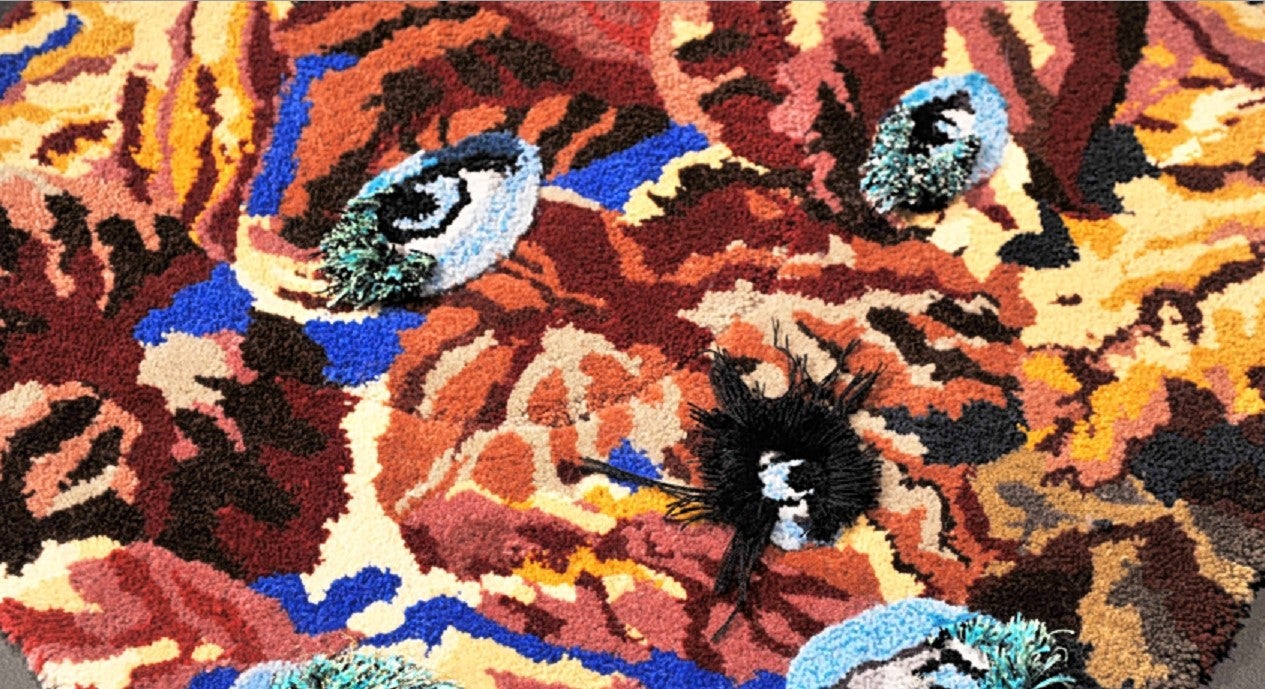The British Art show: Testing the limits of exhibition boundaries
BAS8 is an unstable entity, featuring mutable elements

Your support helps us to tell the story
From reproductive rights to climate change to Big Tech, The Independent is on the ground when the story is developing. Whether it's investigating the financials of Elon Musk's pro-Trump PAC or producing our latest documentary, 'The A Word', which shines a light on the American women fighting for reproductive rights, we know how important it is to parse out the facts from the messaging.
At such a critical moment in US history, we need reporters on the ground. Your donation allows us to keep sending journalists to speak to both sides of the story.
The Independent is trusted by Americans across the entire political spectrum. And unlike many other quality news outlets, we choose not to lock Americans out of our reporting and analysis with paywalls. We believe quality journalism should be available to everyone, paid for by those who can afford it.
Your support makes all the difference.Since its first edition in 1979, the British Art Show has provided era-defining snapshots – the emergence of a generation of sculptors in 1990, the YBAs in 95 – facilitated by the long view of artistic evolution afforded a quinquennial. The curators of thie eighth edition – which will tour over 18 months from Leeds to Edinburgh, Norwich and Southampton – test the limit of every aspect of the exhibitions nominal boundaries. It’s a British show that includes practitioners that neither live nor have roots in Britain. An art exhibition that foregrounds works that fit proudly within the worlds of design and craft in an explicit rejection of the old conceptual hierarchy that placed the art of ideas over the ‘baser’ act of making.
As for being a show? BAS8 is an unstable entity, featuring mutable elements. Some of these – a gaudy, spiralling, magic eye-patterned rug by Linder, and a subtitle box installed by Cally Spooner that scrolls heady YouTube comments – will occasionally be animated by the performance of, respectively, a ballet ensemble and a soprano voice. Other works, such as Jessica Warboys’s sea paintings created by the movement of waves on canvas, will be replaced by a local version at each stop on the tour. A few pieces will undergo significant change. The shell of a 1979 Mini installed in the gallery by Stuart Whipps is undergoing a slow reconstruction by former workers at Birmingham’s Longbridge plant. There’s not much to see, currently, in the Perspex cladding around Anthea Hamilton’s lifesized prints of a pinup model and a Kabuki performer, but both are seeded with an ant colony that will slowly take occupation.

Not that any of this boundary-pushing is to the show’s detriment – the resistance to card-carrying Britishness is an acknowledgement by curators Anna Colin and Lydia Yee that the concept of ‘national’ art is redundant in an era where images, ideas and artists circulate with ever-greater freedom. Rather, they have selected themes – including the impact of digital aesthetics on the physical world, and the animistic qualities of objects – that resonate internationally.
The positioning of the most explicitly craft-centric commission bang in the entrance hall of Leeds Art Gallery is symbolic of the centrality of hand production in the show. Martino Gamper is an intellectually playful designer embraced by the art establishment via a 2014 show at the Serpentine Gallery. Here he has entered into a reciprocal celebration of traditional skills: inviting a bookbinder, cobbler and chair caner, among others, to participate in the show, Gamper made a workstation for each, and invites visitors to bring objects for repair. It’s a reprimand to the casual disposal of broken objects, of course, but as the opening gesture of a comparatively enigmatic exhibition, this highly relatable project sits uncomfortably.
Directly above the ad hoc crafting workshop, a suite of spaces within the exhibition is dedicated to a group of works that engage with the making hand. Pablo Bronstein’s meticulous draughtsmanship evokes a modernist architectural fantasy in which a glass-clad skyscraper sprouts from magnificent greenhouses. A series of brooding portraits by Lynette Yiadom-Boakye evoke a sense of evolving personal narrative in their expressive brushstrokes.
It is with the trio of Caroline Achaintre, Aaron Angell and Jesse Wine that the more vexed relationship between art and craft becomes explicit. Achaintre’s ceramic masks and tufted textiles occupy a haunted territory on the edge of abstraction, tempting you to pick out a face in every surface, no matter how twisted and grotesque. Aaron Angell’s capacity for meticulous placement and patient application is manifest in his delicate reverse-glass paintings – his ceramics, however, are closer to rough totemic objects, weighty with suggestion, fiercely unresolved. Jesse Wine’s witty Still. Life. (2015) is a wall work in which glazed tiles depict a muted, Giorgio Morandi-esque composition of ceramic vessels, here infiltrated by the artist’s studio mug, proudly bearing the Sports Direct logo. Elegant form? Delicate colourwork? These days that’s the work of Instagram.
A final comment on the role of the hand comes in Simon Fujiwara’s film Hello (2015), which intertwines interviews with Maria, a rubbish picker from Mexicali, and Max, a Berlin-based computer programmer. In reference to a body part discovered on the dump worked by Maria, the film is ‘edited’ on screen by a virtual severed hand operated by Max, who was born without arms. “The problem with computer generated objects is that they look too clean and perfect,” he says, having battled to balance his engagement with the digital and physical realms.
As an audience too, we are naturally drawn to the perfected on-screen image, and there’s a tension here between easily consumed but time-gobbling screen-based works and everything else. Perhaps the most demanding of these is Rachel Maclean’s Feed Me (2015), an astonishing Frozen-toned confection in which the 28-year-old artist plays every character in a prosthetics-heavy dystopian fantasy scripted with the depleted vocabulary (‘I heart u!’) and empty emotional proclamations (‘I’m 2 happy!’) of social media.While Maclean’s work is foot-stampingly contemporary, Mikhail Karikis’s Children of Unquiet (2013-14) feels oddly old fashioned, but is no less haunting for that. Filmed in Larderello, Italy, amongst the volcanic steam, bristling gravel pits and defunct buildings of an old geothermal plant, Karikis’s cast of brightly-dressed local children provide a vocal soundtrack and disturbing presence.
In a year in which the Venice Biennale was bemoaned for its overbearingly political preoccupations, it’s notable that while this show may represents artistic concerns, it is notably scant on larger cultural ones. Ahmet Ögüt’s Day after Debt (2015) and Patrick Staff’s The Foundation (2015) touch, respectively on themes of debt and queer identity, but of other pressing issues in Britain and elsewhere – gender equality, youth radicalisation, migration – there is comparative silence. The overriding preoccupation was instead on consumption and production, and the tension between the ease of assisted ‘art-making’ in the digital world and a rekindling of interest in the creative struggle with unruly physical materials. Art in 2015 may not be fully engaged with capital-P politics, perhaps, but it’s no longer blandly pleasing entertainment either.
The British Art show runs at the Leeds Art Gallery to 10 Jan 2016, and then tours
Join our commenting forum
Join thought-provoking conversations, follow other Independent readers and see their replies
Comments